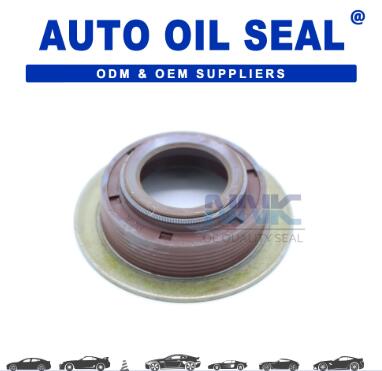Login

Login

Feb. 17, 2025
Gearbox oil seals play a critical role in maintaining the efficiency and longevity of transmission systems. These seals prevent oil leakage, keep contaminants out, and ensure smooth operation. Choosing the right gearbox oil seal is essential to avoid costly repairs and performance issues. This guide will help you understand the key factors to consider when selecting the best oil seal for your gearbox.
A gearbox oil seal is a circular component designed to fit around rotating shafts, preventing lubricants from leaking while blocking dirt and debris. Made from high-quality rubber or synthetic materials, these seals are built to withstand extreme temperatures, high pressure, and constant friction.
Single Lip Seals: These seals are used in low-friction applications and offer basic oil retention.
Double Lip Seals: Featuring an additional lip, these seals provide enhanced protection by preventing dirt and moisture from entering the gearbox.
Spring-Loaded Seals: These include a metal spring to maintain constant pressure on the shaft, improving durability and sealing performance.

Selecting the right oil seal involves evaluating multiple factors to ensure compatibility and effectiveness.
The material of the oil seal affects its durability and resistance to wear. Some common options include:
Nitrile Rubber (NBR): Ideal for general applications, offering good resistance to oil and moderate temperatures.
Fluoroelastomer (Viton): Suitable for high-temperature environments and aggressive fluids.
Silicone: Provides excellent flexibility and operates well in extreme temperatures.
Polytetrafluoroethylene (PTFE): Delivers superior chemical resistance and reduced friction.
High-speed applications require seals designed to handle rapid rotation without excessive wear. Additionally, consider the pressure rating, as some seals are built for low-pressure systems, while others can withstand high-pressure conditions.
The working environment significantly impacts seal performance. Exposure to harsh chemicals, extreme temperatures, or heavy contamination requires a more robust seal material to prevent premature failure.
Investing in a premium gearbox diveshaft oil seal offers several advantages:
Prevents Oil Leakage: Ensures efficient lubrication and reduces maintenance costs.
Enhances Gearbox Longevity: Protects internal components from wear and contamination.
Improves Performance: Minimizes friction and optimizes energy efficiency.
Reduces Downtime: Extends the service life of the gearbox, minimizing unexpected failures.
A leading construction equipment manufacturer recently upgraded its gearbox oil seals to high-performance fluorocarbon seals. As a result, oil leakage incidents dropped by 40%, and maintenance intervals increased by 30%, leading to significant cost savings and improved equipment reliability.
Choosing the best gearbox oil seal is essential for ensuring long-lasting performance, preventing leaks, and reducing maintenance costs. By considering factors such as material, shaft speed, and environmental conditions, you can select the ideal seal for your application. Investing in a high-quality oil seal enhances equipment efficiency and extends its service life, making it a crucial component in any gearbox system.
35 0 0
Join Us

Comments
All Comments ( 0 )